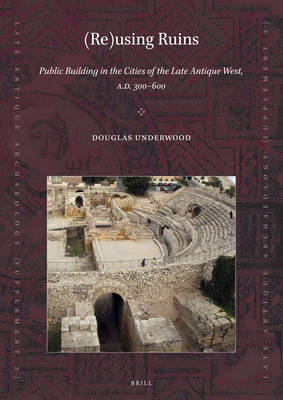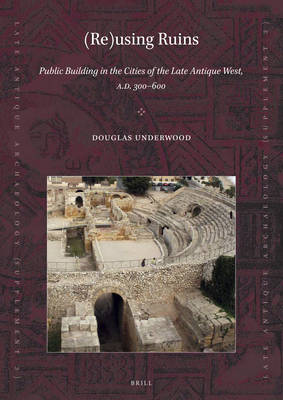
- Afhalen na 1 uur in een winkel met voorraad
- Gratis thuislevering in België vanaf € 30
- Ruim aanbod met 7 miljoen producten
- Afhalen na 1 uur in een winkel met voorraad
- Gratis thuislevering in België vanaf € 30
- Ruim aanbod met 7 miljoen producten
Zoeken
(Re)Using Ruins: Public Building in the Cities of the Late Antique West, A.D. 300-600
Douglas R Underwood
€ 247,95
+ 495 punten
Omschrijving
In (Re)using Ruins, Douglas Underwood presents a new account of the use and reuse of Roman urban public monuments in a crucial period of transition, A.D. 300-600. Commonly seen as a period of uniform decline for public building, especially in the western half of the Mediterranean, (Re)using Ruins shows a vibrant, yet variable, history for these structures.
Douglas Underwood establishes a broad catalogue of archaeological evidence (supplemented with epigraphic and literary testimony) for the construction, maintenance, abandonment and reuses of baths, aqueducts, theatres, amphitheatres and circuses in Italy, southern Gaul, Spain, and North Africa, demonstrating that the driving force behind the changes to public buildings was largely a combined shift in urban ideologies and euergetistic practices in Late Antique cities.
Douglas Underwood establishes a broad catalogue of archaeological evidence (supplemented with epigraphic and literary testimony) for the construction, maintenance, abandonment and reuses of baths, aqueducts, theatres, amphitheatres and circuses in Italy, southern Gaul, Spain, and North Africa, demonstrating that the driving force behind the changes to public buildings was largely a combined shift in urban ideologies and euergetistic practices in Late Antique cities.
Specificaties
Betrokkenen
- Auteur(s):
- Uitgeverij:
Inhoud
- Aantal bladzijden:
- 286
- Taal:
- Engels
- Reeks:
- Reeksnummer:
- nr. 3
Eigenschappen
- Productcode (EAN):
- 9789004319691
- Verschijningsdatum:
- 18/04/2019
- Uitvoering:
- Paperback
- Formaat:
- Trade paperback (VS)
- Afmetingen:
- 211 mm x 295 mm
- Gewicht:
- 703 g

Alleen bij Standaard Boekhandel
+ 495 punten op je klantenkaart van Standaard Boekhandel
Beoordelingen
We publiceren alleen reviews die voldoen aan de voorwaarden voor reviews. Bekijk onze voorwaarden voor reviews.








